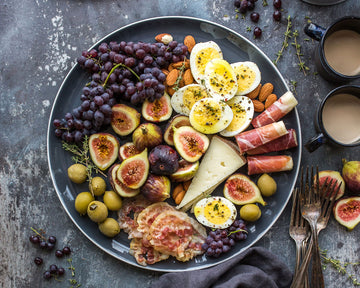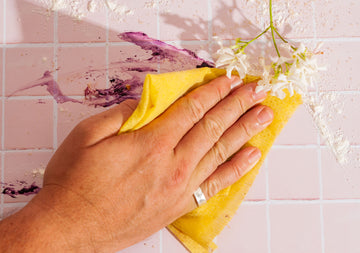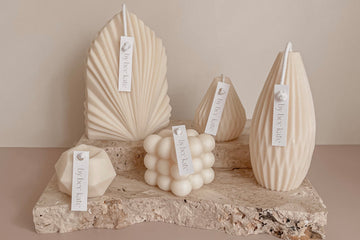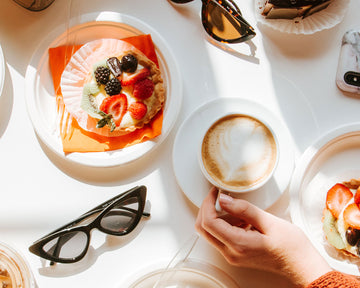Great tips to help you start taking great food photographs
by Tiam Whitfield on Jan 12, 2022

Food photography is more difficult than it appears. Food is a great subject for still life photography, and you can get some amazing images, however, great food photography entails more than simply photographing your dinner dish. To make the most out of the magnificent textures, patterns and forms, you must follow a few specific principles, just like any other photographic genre.
Tips for taking great food photos
It's all about the light! The most important tip for beginners is to become aware of the strength of light and how it reflects off the dish and then learn to adjust accordingly. Here are some helpful hints to get you started.

Use natural light when shooting.
The use of light is fantastic when photographing still food. Rather than using artificial lighting, photograph your meal using natural daylight to create a realistic or authentic food scene. If you shoot your meal using artificial light, such as a lightbulb (Tungsten light), your photo have have an orange or yellow colour cast. Using flash or fluros will give your images a colder, bright white look.
Colour casts will ruin the intrinsic attractiveness of your subject from electric lighting, yet sunshine produces a much more balanced coloured light. Natural lighting with a mellow, diffused glow is ideal for achieving the best food photography lighting for natural lighting and shadows. You may try shooting your cuisine outside when the weather is clear.
In most circumstances, though, you should avoid photographing in direct sunlight since it might produce exposure issues and harsh shadows on your subject, unless that’s something that you want to achieve in your photos.
Take Command Of The Shadows
In photography, shadows are essential because they may make or ruin a picture. Shadows may improve a photograph by providing depth and visual intrigue, but they can also detract from it by taking up too much space or changing the mood of the photograph you are creating.
The kind of light utilised determines the intensity of shadows. For example, a cloudy day generates more diffused light, which reduces the shadows. This can also be achieved with a softbox for studio lighting. Direct sunshine produces more intense, black shadows. In the studio, this can be achieved by taking the softbox off your lighting and the shadow darkness can be controlled by using another diffused light for ambient lighting.
Use a background that isn't too bright or too dark.
The backdrop is important when photographing meals. The viewer's attention will be pulled away from the meal if the setting is too cluttered or vibrant. Because of the uniform background, you can focus on the cuisine in the scenario. A plain neutral background isn't always required, just keep in mind that the background should enhance rather than detract from the subject.

Light backgrounds, dark compositions, and wooden (brown) backgrounds are the three basic backdrops that perform well for food presentations.
Food that is dark in colour looks excellent against a dark background, whereas food that is light in colour looks fantastic against a light background.
Consider the Colours
Simple food photography is great because it lets you experiment with colour. Colours have a significant impact on your design and can alter the image's overall tone.
Use similar hues to create a frame. Soft earthy shades form a harmonic arrangement that evokes sentiments of calm and warmth.

Choose the perfect angle to shoot from.
Always consider the angle to take from while photographing food to get the most of the subject. When the food is put on a dish or platter, taking from above is frequently the best option.
There are various advantages to shooting from above. It lets you include all of the cuisine and surrounding details while highlighting the strong forms of the plates, silverware, and other items in the picture.
Shooting from one side is also a great way to highlight the intricate details of a piece of bread, cake, muffin, or other baked good. Just make sure you're aiming at a solid object, such as a wall.
Shooting diagonally is the third alternative. It is best to portray the subject's three-dimensional form by including both the side and top views.
Take a few photographs from various angles if you're unsure which angle would best portray your dish. It's surprising how much a tiny adjustment in camera angle can alter the outcome.
Last but not least, be inventive.
It's more of an art than a science when it comes to food photography. While some general recommendations can help you take better images of your food, don't be afraid to try things with effects, food photography lighting methods, and design to give your photography a more creative edge.
Continue learning all you need to know about photographing your food with Vinyl backdrops Photography.
There are infinite amazing and intriguing methods to experiment with your food photography.
A new spin on the style of your food shot might help your images stand out. The more distinctive a viewpoint you can offer to your food photography, the more likely you are to attract the eye of folks reading through their feed on social media. And it's all about grabbing people's attention—and hopefully their appetites.
Keep experimenting, practising and having fun with being creative with subject matter that has been shot a thousand times before and you may develop a unique style that you can call your own.
Have fun!




